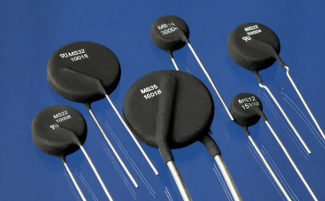

Terms and concepts used in thermal resistance
It is important to understand thermal resistance and familiarity with common terms used to describe its purpose and functions. These are some terms you may encounter when buying thermal resistance:
Current-time characteristics
At the specified environmental temperature, the characteristic is the relationship between the thermistor through the current and time when introducing or interrupting the voltage. Dispersal
This is the ratio of the power consumption change of thermistor and its body temperature at a specific environmental temperature. This ratio is usually represented by milling tiles per degree.
Maximum work temperature
This is the highest body temperature of thermal resistance. At this temperature, it will continue to work for a long time without affecting its stability characteristics. Internal or external calories or both can generate this temperature, but the body temperature should not exceed the maximum value of the indication.
Maximum steady -state current
This term is used for power thermistor. It is a continuous and stable state current that thermistor can pass. The current can be DC or RMS AC. The maximum steady -state current of some thermistor is assumed that the highest working environment temperature is 65 degrees Celsius. The temperature may be higher than 65 degrees. In this case, you can design thermal resistance according to the specifications.
NTC
This abbreviation represents "negative temperature coefficient". This is a thermistor that increases the zero -power resistance when the temperature of the thermistor is increased.
PTC
This abbreviation represents the "positive temperature coefficient". The PTC thermistor is the opposite of NTC thermistor, and its zero power resistance rises with its body temperature.
Stability
Thermal resistance is usually subject to various test conditions. When they can maintain certain characteristics or quality after the application test method, they are considered stable.
Standard reference temperature
25 degrees Celsius (or 77 Fahrenheit) is the temperature of the heat -sensitive resistance when zero -power resistance is the nominal value. This is one of the most commonly referenced electrical characteristics.
Temperature-power characteristics
This feature refers to the relationship between the temperature of the thermistor and the steady -state power at the specified environmental temperature.
Hot time constant
When the thermistor is zero -power, it changes 63.2% of the difference between the initial and final body temperature due to the changes in the temperature of the temperature, and the heat time constant is required.
Zero power resistance
This refers to the resistance value (DC) of thermistor. When the power consumption of thermal resistance is low enough, it is measured at a specific temperature. The additional reduction of power will be equivalent to not exceeding 0.1%of the resistance changes (or 1/10 of the tolerance, which is smaller).

